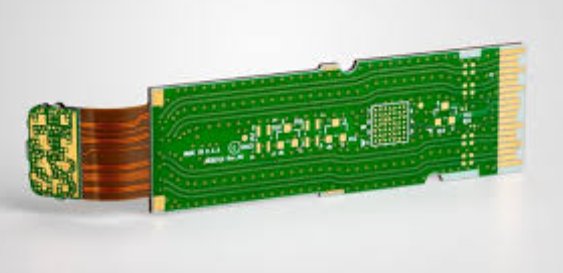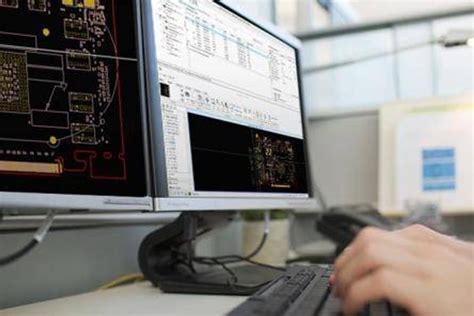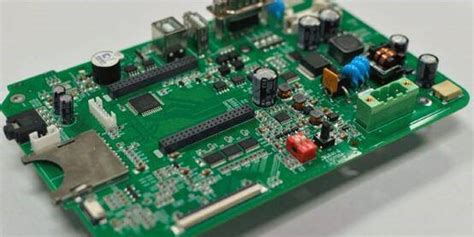Factors Influencing PCBA Process Quality: A Comprehensive Analysis
Printed Circuit Board Assembly (PCBA) is a critical stage in the manufacturing of electronic devices, where components are mounted onto a PCB to create a functional circuit. The quality of the PCBA process directly impacts the performance, reliability, and longevity of the final product. Numerous factors influence PCBA process quality, ranging from material selection and design considerations to manufacturing techniques and environmental conditions. This article provides a comprehensive analysis of the key factors that affect PCBA process quality, offering insights into how manufacturers can optimize their processes to achieve high-quality results.
1. Introduction to PCBA Process Quality
PCBA process quality refers to the ability of the assembly process to produce reliable and defect-free electronic circuits. High-quality PCBA ensures that the final product meets performance specifications, operates reliably under intended conditions, and has a long service life. Achieving high PCBA process quality requires careful attention to every stage of the assembly process, from design and material selection to soldering and inspection.

2. Key Factors Influencing PCBA Process Quality
2.1 Design Considerations
The design of the PCB and the assembly process plays a crucial role in determining PCBA quality. Key design-related factors include:
2.1.1 PCB Layout
- Component Placement: Proper placement of components minimizes trace lengths, reduces signal interference, and improves thermal management.
- Trace Routing: Optimized trace routing ensures signal integrity, reduces crosstalk, and minimizes electromagnetic interference (EMI).
- Thermal Management: Effective thermal design, including the use of thermal vias and heat sinks, prevents overheating and ensures reliable operation.
2.1.2 Design for Manufacturability (DFM)
- Component Selection: Choosing components that are readily available and compatible with the assembly process reduces the risk of delays and defects.
- Pad and Via Design: Properly designed pads and vias ensure reliable solder joints and electrical connections.
- Solder Mask and Paste Mask: Accurate solder mask and paste mask designs prevent solder bridging and ensure proper solder paste deposition.
2.2 Material Selection
The quality of materials used in the PCBA process significantly impacts the final product’s performance and reliability. Key material-related factors include:
2.2.1 PCB Substrate
- Material Type: The choice of substrate material (e.g., FR-4, ceramic, or metal-core) affects thermal conductivity, electrical performance, and mechanical stability.
- Layer Count: Multilayer PCBs offer better signal integrity and power distribution but are more complex to manufacture.
2.2.2 Components
- Quality: High-quality components from reputable suppliers reduce the risk of defects and failures.
- Compatibility: Components must be compatible with the soldering process and operating conditions.
2.2.3 Solder Paste
- Composition: The composition of the solder paste (e.g., lead-free or leaded) affects solder joint quality and reliability.
- Storage and Handling: Proper storage and handling of solder paste prevent degradation and ensure consistent performance.
2.3 Manufacturing Techniques
The techniques and equipment used in the PCBA process have a direct impact on quality. Key manufacturing-related factors include:
2.3.1 Soldering Methods
- Reflow Soldering: Used for surface-mount components, reflow soldering requires precise temperature control to ensure proper solder joint formation.
- Wave Soldering: Used for through-hole components, wave soldering requires careful control of solder wave height and temperature to prevent defects.
- Selective Soldering: Used for mixed-technology assemblies, selective soldering allows for precise control of solder application.
2.3.2 Automated Assembly
- Pick-and-Place Machines: High-precision pick-and-place machines ensure accurate component placement, reducing the risk of misalignment and defects.
- Automated Optical Inspection (AOI): AOI systems detect defects such as missing components, misalignment, and solder bridges, improving overall quality.
2.3.3 Cleaning Processes
- Flux Residue Removal: Proper cleaning removes flux residue, preventing corrosion and ensuring reliable electrical connections.
- Contamination Control: Maintaining a clean manufacturing environment prevents contamination that can lead to defects.
2.4 Process Control and Monitoring
Effective process control and monitoring are essential for maintaining consistent PCBA quality. Key factors include:
2.4.1 Temperature Control
- Reflow Profile: Precise control of the reflow profile (temperature and time) ensures proper solder joint formation and prevents defects such as tombstoning and solder bridging.
- Wave Soldering Parameters: Control of wave height, temperature, and conveyor speed ensures reliable solder joints for through-hole components.
2.4.2 Process Monitoring
- Real-Time Monitoring: Real-time monitoring of key process parameters (e.g., temperature, humidity, and solder paste deposition) allows for immediate corrective actions.
- Statistical Process Control (SPC): SPC techniques analyze process data to identify trends and prevent defects before they occur.
2.5 Environmental Conditions
The manufacturing environment plays a significant role in PCBA process quality. Key environmental factors include:
2.5.1 Cleanliness
- Contamination Control: A clean manufacturing environment prevents contamination from dust, debris, and other particles that can cause defects.
- ESD Protection: Electrostatic discharge (ESD) protection measures prevent damage to sensitive components.
2.5.2 Temperature and Humidity
- Controlled Environment: Maintaining stable temperature and humidity levels prevents issues such as solder paste drying and component moisture absorption.
- Storage Conditions: Proper storage of components and materials prevents degradation and ensures consistent performance.
2.6 Inspection and Testing
Inspection and testing are critical for identifying and addressing defects before the final product is shipped. Key inspection and testing factors include:
2.6.1 Automated Optical Inspection (AOI)
- Defect Detection: AOI systems detect defects such as missing components, misalignment, and solder bridges, improving overall quality.
- Process Feedback: AOI data provides feedback for process optimization and defect prevention.
2.6.2 X-Ray Inspection
- Hidden Defects: X-ray inspection detects hidden defects such as voids in solder joints and misaligned BGA (Ball Grid Array) components.
- Quality Assurance: X-ray inspection ensures the reliability of complex and high-density assemblies.
2.6.3 Functional Testing
- Performance Verification: Functional testing verifies that the assembled PCB meets performance specifications and operates as intended.
- Defect Identification: Functional testing identifies defects that may not be detected by visual or automated inspection methods.

3. Best Practices for Ensuring High PCBA Process Quality
3.1 Implement Design for Manufacturability (DFM) Principles
- Collaborate with Manufacturers: Work closely with manufacturers to ensure that the design is optimized for the assembly process.
- Use Standard Components: Standard components reduce the risk of delays and defects.
3.2 Select High-Quality Materials
- Reputable Suppliers: Source components and materials from reputable suppliers to ensure quality and reliability.
- Proper Storage: Store materials in controlled environments to prevent degradation.
3.3 Optimize Manufacturing Processes
- Precise Control: Maintain precise control of key process parameters, such as temperature and solder paste deposition.
- Real-Time Monitoring: Use real-time monitoring and SPC techniques to identify and address issues promptly.
3.4 Maintain a Clean and Controlled Environment
- Contamination Control: Implement measures to prevent contamination from dust, debris, and ESD.
- Stable Conditions: Maintain stable temperature and humidity levels in the manufacturing environment.
3.5 Conduct Thorough Inspection and Testing
- Automated Inspection: Use AOI and X-ray inspection to detect defects and ensure quality.
- Functional Testing: Perform functional testing to verify performance and identify defects.

4. Emerging Trends in PCBA Process Quality
4.1 Industry 4.0 and Smart Manufacturing
- IoT and Data Analytics: The integration of IoT and data analytics enables real-time monitoring and predictive maintenance, improving process quality.
- Automation: Increased automation reduces human error and enhances consistency.
4.2 Advanced Materials
- High-Performance Substrates: New substrate materials offer improved thermal and electrical performance.
- Lead-Free Solder: Lead-free solder pastes are becoming more common, driven by environmental regulations.
4.3 Miniaturization and High-Density Interconnects (HDI)
- Fine-Pitch Components: Advances in HDI technology enable the use of fine-pitch components, increasing circuit density and complexity.
- 3D Printing: Additive manufacturing techniques, such as 3D printing, offer new possibilities for PCB design and assembly.
5. Conclusio
PCBA process quality is influenced by a wide range of factors, including design considerations, material selection, manufacturing techniques, process control, environmental conditions, and inspection methods. By understanding and optimizing these factors, manufacturers can achieve high-quality PCBA results that meet performance specifications and ensure reliable operation. Emerging trends, such as Industry 4.0, advanced materials, and miniaturization, are shaping the future of PCBA process quality, offering new opportunities for innovation and improvement. With careful attention to detail and adherence to best practices, manufacturers can deliver high-quality PCBA products that meet the demands of modern electronics.







